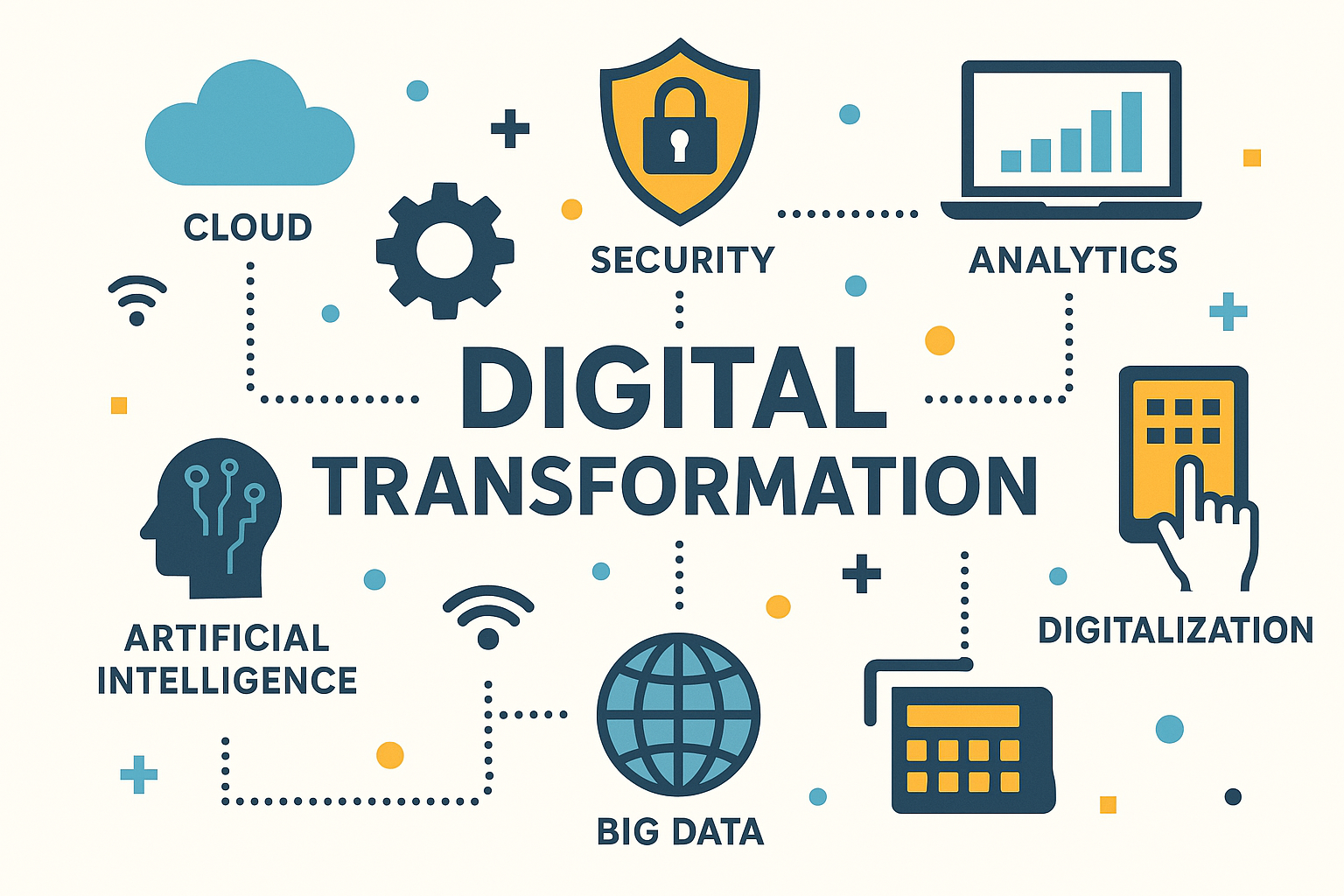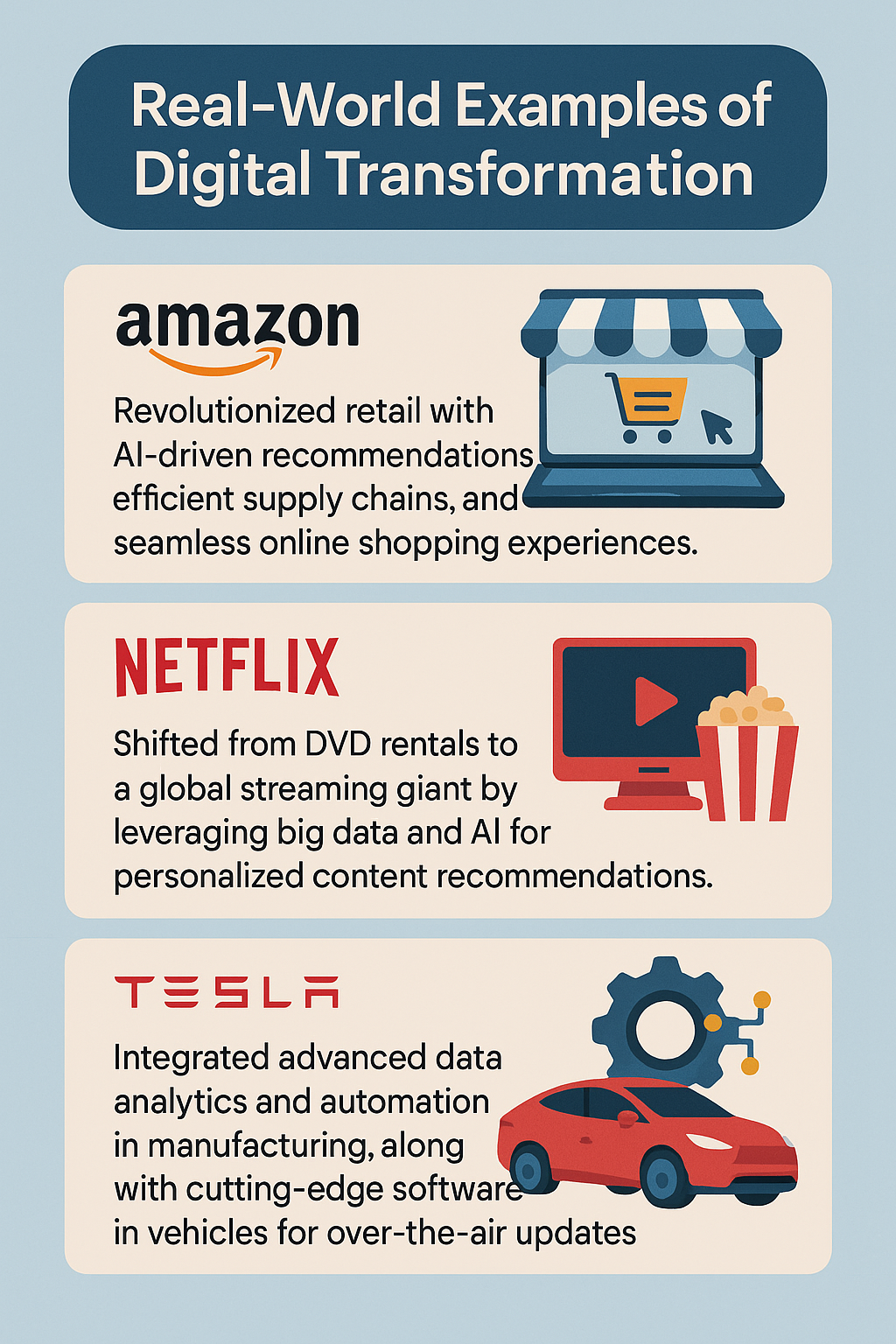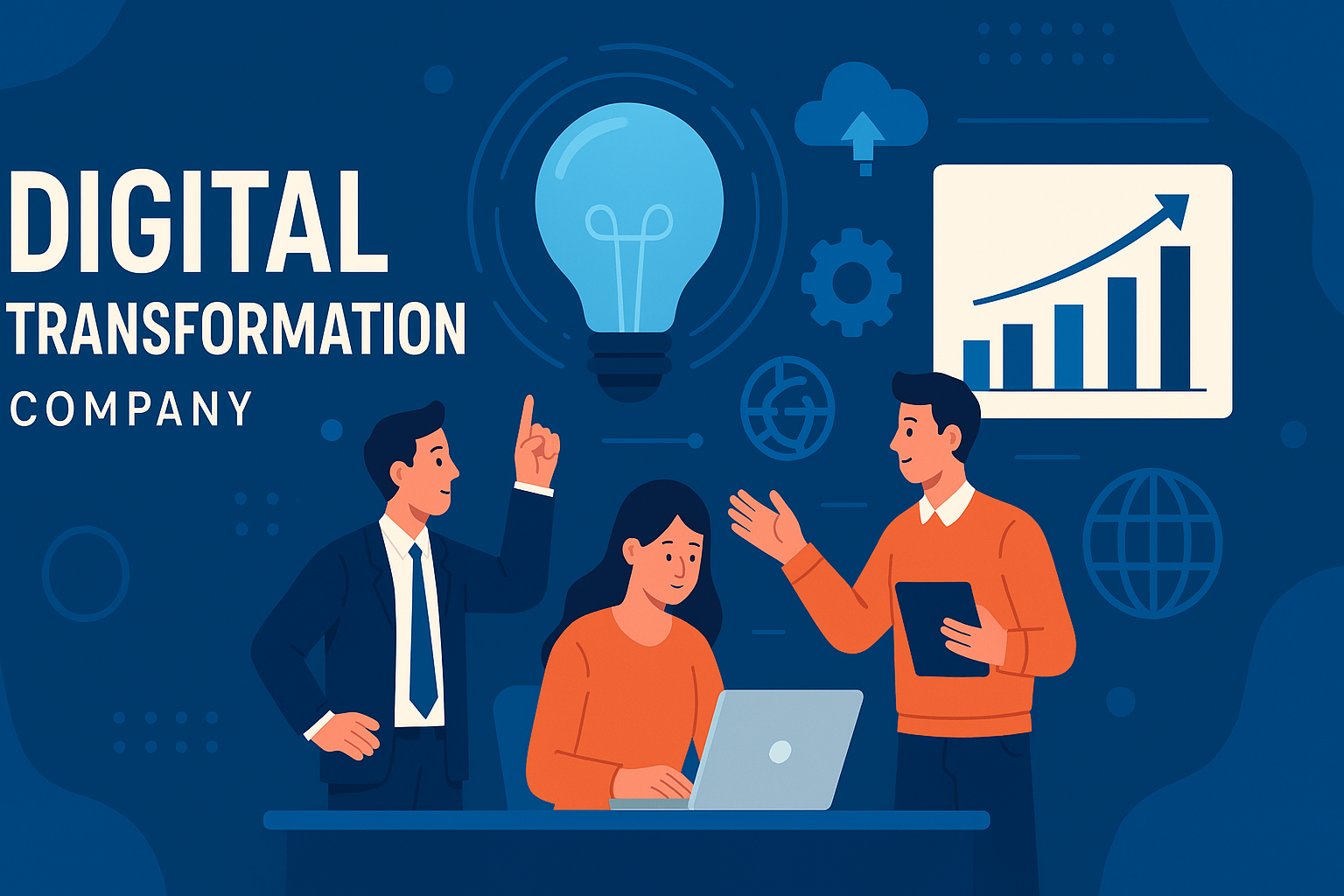In today’s fast-paced business environment, digital transformation isn’t just a trend—it’s a necessity. Companies across industries are realizing that to stay competitive, they must adapt to the rapidly evolving technological landscape. From improving customer experiences to optimizing internal operations, digital transformation has become the cornerstone of modern business success.
But what exactly is digital transformation, and how can it benefit your business? Let’s dive into the key elements of digital transformation, its advantages, and how your company can leverage it to thrive in the digital age.
What Is Digital Transformation?
Digital transformation is the process of integrating digital technologies into all areas of a business. This shift fundamentally changes how companies operate and deliver value to customers. It’s not just about adopting new tools; it’s about rethinking business models, workflows, and strategies to improve efficiency and foster innovation.
At its core, digital transformation focuses on:
-
Leveraging Technology: Utilizing advanced technologies like cloud computing, artificial intelligence (AI), big data, and the Internet of Things (IoT).
-
Enhancing Customer Experience: Providing seamless, personalized interactions across multiple digital channels.
-
Optimizing Operations: Streamlining processes to reduce costs, improve productivity, and increase agility.

Why Digital Transformation Matters
-
Increased Efficiency: Automation of repetitive tasks and optimized workflows help businesses save time and resources.
-
Better Customer Engagement: Digital platforms allow for real-time communication and personalized experiences, leading to higher customer satisfaction.
-
Data-Driven Decisions: Access to real-time data empowers businesses to make informed decisions quickly.
-
Competitive Advantage: Companies that embrace digital transformation can adapt faster to market changes and emerging trends.
-
Scalability: Digital solutions make it easier to scale operations without a proportional increase in costs.
Key Areas of Digital Transformation
1. Customer Experience (CX) Transformation
In the digital era, customers expect personalized, responsive, and convenient experiences. Businesses can achieve this through:
-
Omnichannel Engagement: Providing consistent service across websites, mobile apps, social media, and more.
-
AI-Powered Insights: Using AI to analyze customer behavior and offer tailored recommendations.
2. Operational Transformation
Digitizing internal processes helps reduce inefficiencies and operational costs. Key strategies include:
-
Automation Tools: Robotic Process Automation (RPA) for routine tasks.
-
Cloud Computing: Enabling remote work, real-time collaboration, and scalable infrastructure.
3. Business Model Transformation
Digital technologies can open doors to new business models. For example:
-
E-commerce Platforms: Businesses can reach global audiences without physical stores.
-
Subscription Services: Leveraging digital platforms to offer recurring revenue models.
4. Cultural Transformation
Successful digital transformation requires a cultural shift within the organization. This involves:
-
Agile Mindset: Encouraging experimentation, adaptability, and continuous learning.
-
Leadership Support: Leaders must champion digital initiatives and inspire teams.
Challenges in Digital Transformation
While the benefits are clear, digital transformation comes with its challenges:
-
Resistance to Change: Employees may fear job loss or struggle to adapt to new technologies.
-
High Implementation Costs: Initial investments in technology and training can be significant.
-
Data Security Concerns: As businesses become more digital, protecting sensitive data becomes critical.
To overcome these hurdles, companies should invest in change management strategies, provide adequate training, and prioritize cybersecurity.
How to Start Your Digital Transformation Journey
-
Assess Your Current State: Identify areas where digital solutions can add value.
-
Define Clear Goals: What do you want to achieve—better customer service, cost savings, or faster product delivery?
-
Choose the Right Technologies: Select tools that align with your business objectives.
-
Engage Your Team: Foster a culture of innovation and provide training to ease the transition.
-
Measure and Iterate: Continuously monitor progress and adjust strategies as needed.

Real-World Examples of Digital Transformation
-
Retail: Companies like Amazon have revolutionized shopping with AI-driven recommendations and efficient logistics.
-
Healthcare: Telemedicine platforms have made healthcare accessible remotely, especially vital during the COVID-19 pandemic.
-
Finance: Fintech startups have disrupted traditional banking with mobile apps, blockchain, and digital payment solutions.
These examples show how digital transformation can create new opportunities, improve customer experiences, and drive growth.

Final Thoughts
Digital transformation is more than just a technological shift; it’s a strategic approach to doing business in the 21st century. By embracing digital tools, companies can enhance efficiency, foster innovation, and deliver exceptional customer experiences.
Whether you’re a small business looking to streamline operations or a large enterprise aiming to lead your industry, digital transformation can unlock new levels of success. The key is to start small, think big, and continuously evolve.
Ready to take your business to the next level with digital transformation?
Contact us today to discover how our expert solutions can help you streamline operations, enhance customer experiences, and drive growth.
[Schedule a Free Consultation] and start your digital transformation journey with confidence!


